
Leopard Safari in India
Have you always wanted to see leopards in the wild? Then this Leopard safari in India offers the best chance of doing so!
As the name suggests, this safari is designed around leopards. Ranthambhore National Park is on the itinerary right at the start.
Ranthambhore’s unique climate and vegetation have created dry and open forests with few cover options for the rich wildlife, so observing them here is relatively uncomplicated. In addition to leopards, many other species of big cats can be observed. Ranthambhore is of course famous for the tigers that live here, but observing these shy hunters requires a bit of luck. You will go on safari in this national park several times and will have many impressive experiences.
Leopards and India – the area around Bera, a traditional Rajasthani village in the mountains, is known for this. An estimated 30 to 50 leopards live in the rocky landscape. Away from the tourist crowds, the chances of seeing the shy leopards here are excellent if you have enough patience. The jeep safaris in Bera are original, authentic, not touristy and really something special by Indian standards.
We also spend several days in the Nagarhole Tiger Reserve, which is located in the foothills of the Western Ghats, which have now been declared a (natural) World Heritage Site.
In addition to the leopards and other animals, you will also get to know the cultural side of India by visiting Amber Fort and other sights near and in Jaipur as well as a tour of Udaipur.
This trip is not only worthwhile for leopard fans!
What makes this trip so unique?
- You will travel to the rocky landscape of Bera completely off the beaten tourist track on a leopard safari.
- You will visit the Ranthambhore National Park and the Nagarhole Tiger Reserve, where you have a pretty good chance of seeing tigers in addition to leopards.
- You will experience India’s culture in Jaipur and Udaipur, where you will visit impressive palaces and monuments like those from One Thousand and One Nights and wonder how people could ever create such beautiful works of art.
Day 1: Arrival New Delhi
Arrival in Delhi. Upon arrival, you will be picked up and taken to the airport hotel. The program for the coming days will be discussed together over a first round of beers.
You can rest for a few hours at the Redfox Aerocity or Similar Hotel before continuing the next day.
Day 2 – Day 4: New Delhi – Train to Sawai Madhopur (Ranthambore National Park)
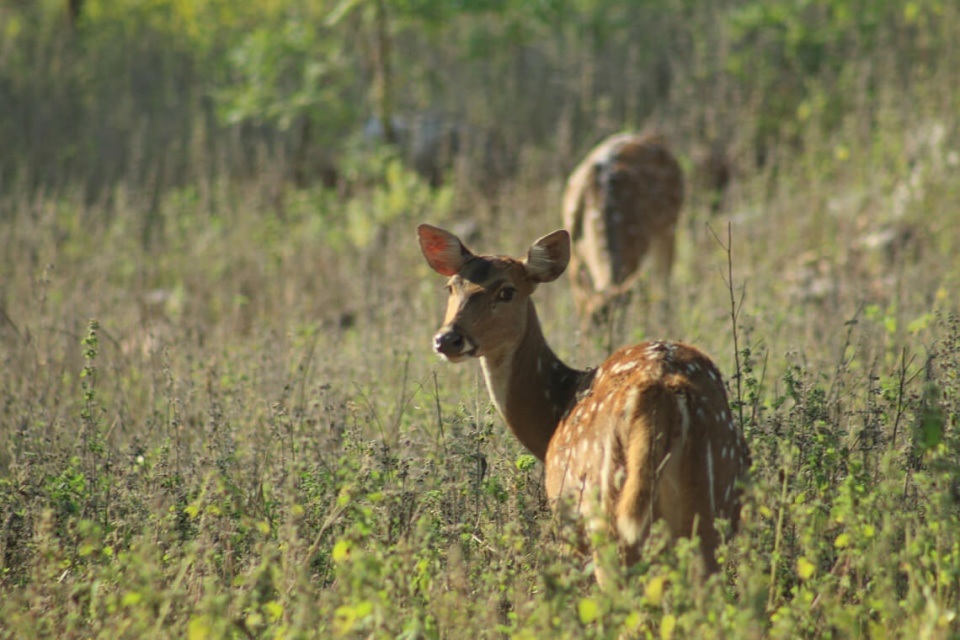

After an early breakfast at the hotel, we drive to the railway station to board the Sawai Madhopur train, which takes us to today’s final destination, Ranthambhore National Park, in just under 4 hours. Arrival and transfer to the hotel.
Ranthambhore’s unique climate and vegetation have created dry and open forests with little cover for the rich wildlife. This makes wildlife watching here a real breeze. The tigers, which are at the top of the food chain, are the undisputed kings of the reserve and also the reason why Ranthambhore is so popular. Even though the park is known for its large tiger population, it must be remembered that tigers are naturally solitary and shy hunters who avoid contact with humans.
Therefore, tiger sightings, as common as they are here, are always a matter of luck. But the smaller cats of Ranthambhore are no less exciting: leopard, caracal, leopard cat, fishing cat and jungle cat are some of the big cat species that share the habitat with the tigers. Sloth bear, striped hyena, jackal, desert fox, palm civet, mongoose, huge crocodiles and pythons are also other predators that prey abundantly in Ranthambhore. Axis and Sambhar deer, elegant Indian gazelles and Nilgai antelopes are high on the tiger’s preferred food list.
Above in the sky, the vultures and short-toed eagles circle, scanning the ground for possible prey from their elevated position, crocodiles dozing in the sun, an abundance of water birds concentrating at the watering holes. For an avid bird watcher, Ranthambhore and its surroundings are a paradise. Cormorants, pearl spur fowl, sarus cranes, Hindu jacanas, snipes, kingfishers, nightjars, Indian sandgrouse and many other regular winter migrants that leave their nesting grounds north of the Himalayas in winter can be seen here.
A visit to Ranthambhore is always a comprehensive nature experience that any nature lover will enjoy – provided you are interested in the park’s entire animal population and not just tigers!
You will go on safari four times over these two days. The Indian tiger reserves are notoriously divided into zones that are assigned at the time of booking the safari permit and from which you cannot deviate. Of the 10 different zones in Ranthambhore, zones 1-5 are considered good for tiger sightings and are therefore very popular.
Zones 6, 7 and 8 are also good for tiger sightings, but are comparatively less productive than zones 1-5 and sightings depend on the movement of the tiger. Of these three, zone 6 is the best, claiming the territory of 3 to 4 tigers and is also known for leopards and sloth bears.
Zone 10 is the territory of about four or five tigers and three cubs, the presence of a panther is an additional attraction.
2 nights at Ranthambhore Kothi.
Day 4 – Day 5: Ranthambore National Park – Jaipur
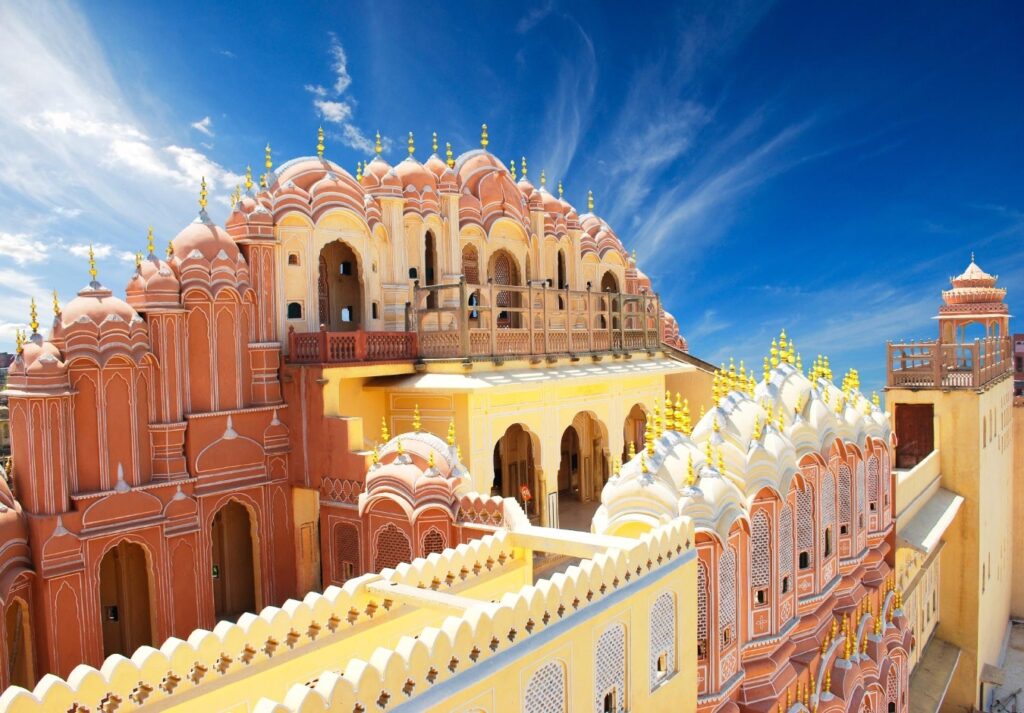
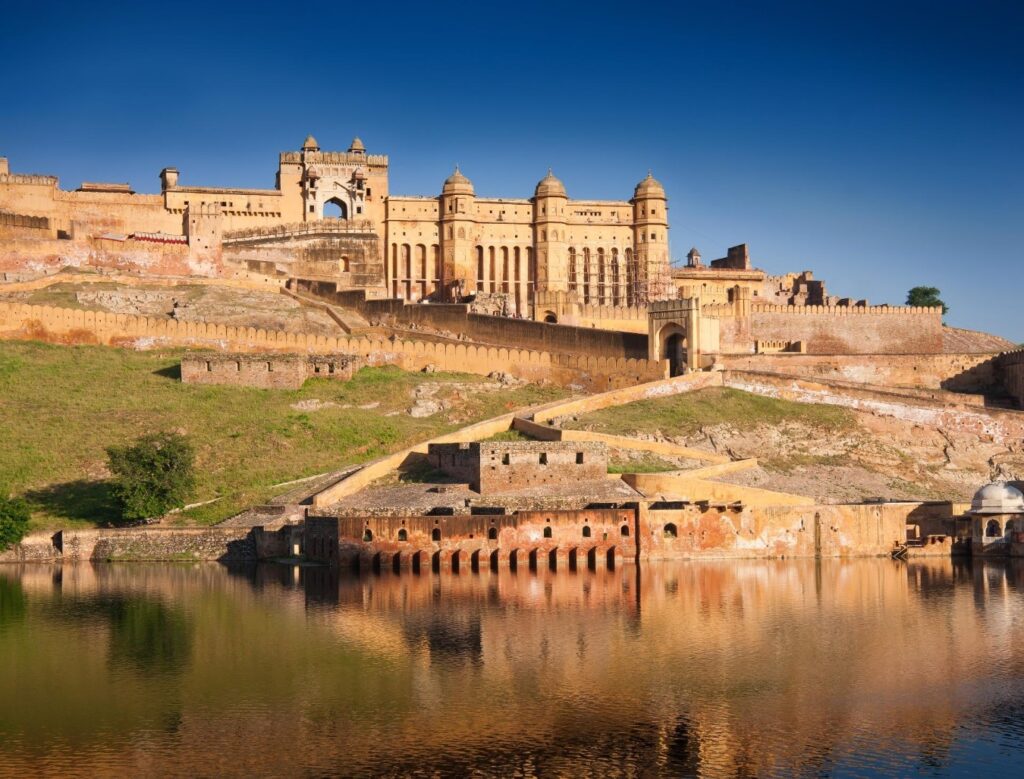
After a final game drive in the park, we drive to Jaipur around three hours. Jaipur was only built at the beginning of the 17th century by Maharaja Jai Singh II as a fortress city with wide, checkerboard-like streets. Nine rectangular city districts were separated from each other by 34-meter-wide main streets. All side streets run straight and at right angles to the main streets. This architectural gem is also called the “pink city” because of the brownish-yellow color of the houses, which appear warm pink in the evening sunshine. The old town is surrounded by a thick wall that is still completely intact. The unchanged, historic city center can only be entered through one of the seven magnificent gates.
Here we visit the observatory and the royal palace, which rises in the middle of the city against the impressive mountain backdrop. The astronomical observatory, which was built at the beginning of the 18th century by the astronomer king Maharaja Sawai Jai Singh II, consists mainly of 18 stone instruments that were used to determine the position of celestial bodies.
Because of its importance, the observatory was placed under monument protection by the archaeological faculty and declared a UNESCO World Heritage Site. The day ends with a visit to the City Palace Museum, where a huge and unique collection of royal costumes, precious Pashmina shawls, Benares silk saris and other clothes with Sanganeri prints and embroidery are on display. In the afternoon we drive to Amber, a mighty fortress 11 km north of Jaipur.
Overnight stay at the Nirain Niwas Palace.
Day 5 – Day 9: Jaipur – Bera Rajasthan

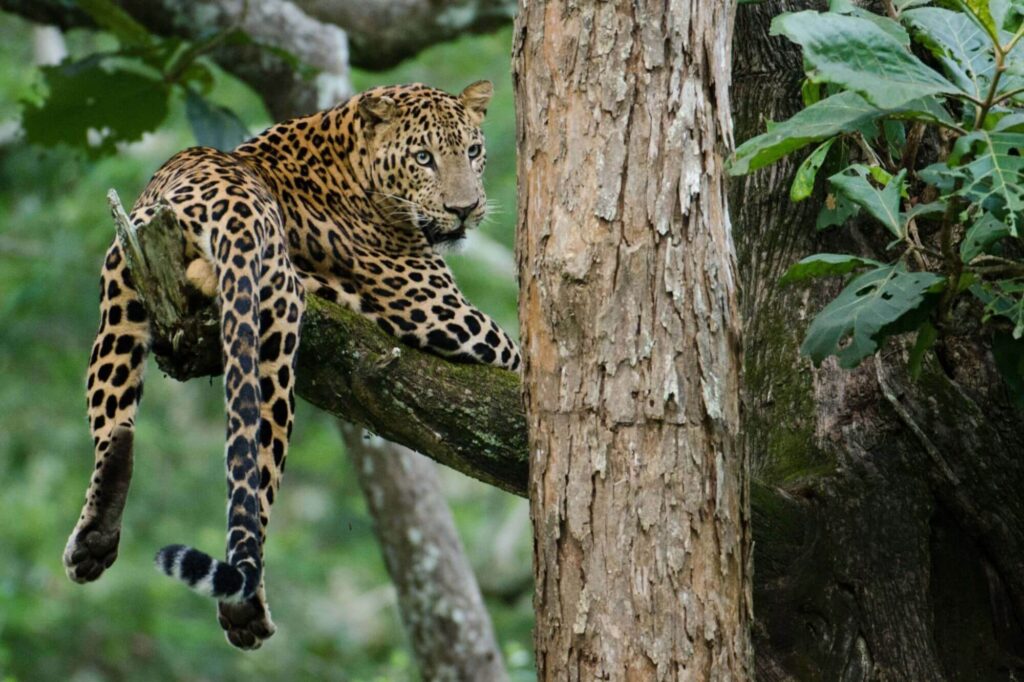
We drive to Bera approximately seven hours today.
With an area of just 50 square kilometers, Bera has more leopards than any other place on earth. Rocky outcrops, thorny bush forest and small wetlands are the typical habitats of the Bera leopards. But safaris in Bera require a great deal of patience and luck. The experienced local guides know the exact hiding places of the leopards and will therefore drive you to these places and wait there until it gets dark. At sunset, leopards usually leave their hiding places in search of prey.
Successful sightings also require very sharp eyes and a powerful and stable lens with a lot of zoom, because leopards can only be seen from far away. But Bera is not all about leopards. Jackals, jungle cats and hyenas can also be spotted. At one point we also drive to the Jawai Dam, one of the most beautiful places in Bera. Flamingos, spoonbills, storks, kites and other beautiful birds will make your visit unforgettable.
4 nights at Bera Safari Lodge.
Day 9 – Day 10: Bera – Udaipur

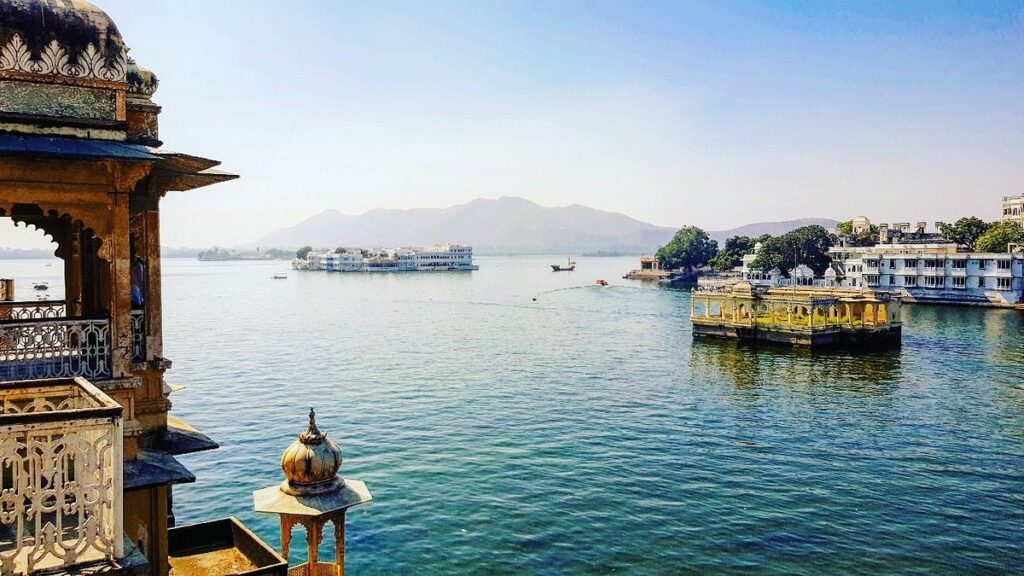
Today we drive to Udaipur (130 km). Udaipur was the second capital of the Mewar Kingdom under the rule of the Sisodia Rajput clan, which claims its origins from the legendary Solar Dynasty. Due to Lake Pichola – Udaipur’s famous man-made freshwater lake surrounded by islands with impressive historical monuments and palaces such as Jag Niwas and Jag Mandir, the city was described by British administrator James Tod as “the most romantic place on the Indian continent”. In fact, it is also the most popular wedding destination in India.
We take a walking tour of the city here. The tour begins with a visit to the City Palace. Built in 1725, the grand City Palace is actually a conglomeration of eleven palaces overlooking the sprawling Lake Pichola. Then we head to the Jagdish Temple. Built in 1651 by Maharaja Jagat Singh, this temple is dedicated to Lord Vishnu and is located in the center of the old town. The temple has a black marble image of Lord Vishnu, which is unusual for the northern part of the country where statues of gods were usually carved from marble. In the afternoon, we are transferred to the airport where we board the plane to Mumbai.
Overnight stay in The LaLiT Laxmi Vilas Palace Udaipur or Similar.
Day 10 – Day 13: Bera – Udaipur Airport – Fly to Bangalore – Drive to Nargahole National Park
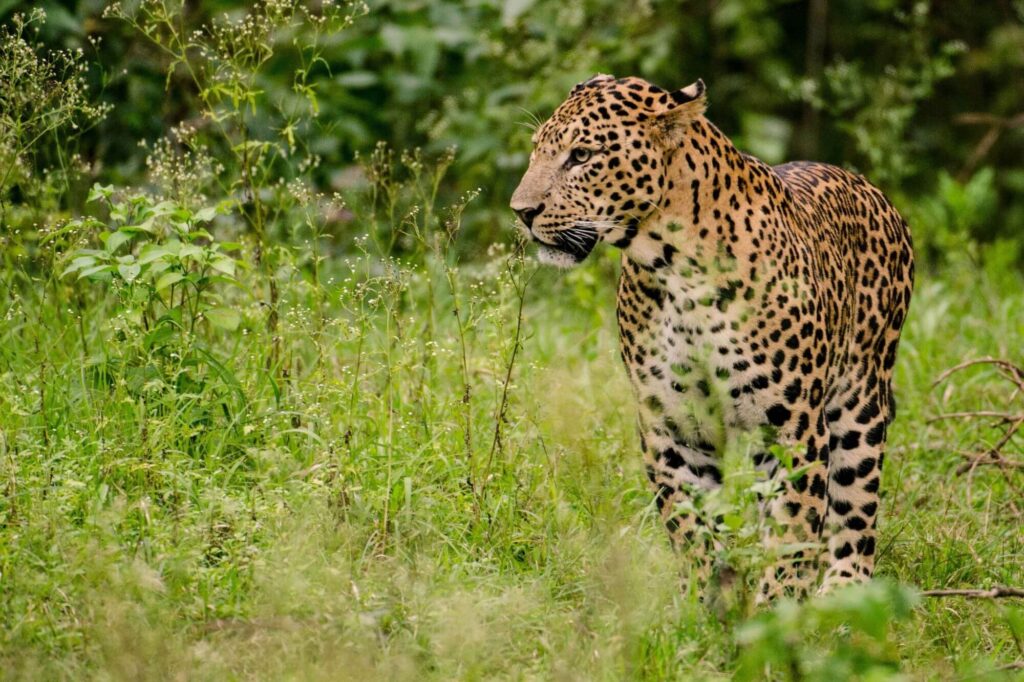

Transfer to the Udaipur airport and flight to Bangalore. You will be met at the airport and taken to the last national park on this trip, Nagarhole National Park, around 6 hours.
Morning and evening game drives in Nagarhole National Park. The Nagarhole Tiger Reserve is located in the foothills of the Western Ghats, which have now been declared a (natural) World Heritage Site, and is home to an extremely healthy population of tigers, leopards, wild dogs, sloth bears, gaurs, sambars, the curious striped mongoose and red mongoose, as well as a large number of axis deer and Dussumier Hanuman langurs.
The organization of the safaris in Nagarhole is completely handled by the park administration. In order to accommodate the large number of visitors with the limited number of vehicles, some game drives are carried out in noisy minibuses with space for up to 15 people, it cannot be described as a high-quality safari experience. Only guests of the Kabini River Lodge are allowed to take part in jeep safaris. Exclusive safaris in your own jeep, as you know them from the central Indian parks, are not possible here. The park guides that we know here and use for our guests are excellent.
3 nights in the Kabini River Lodge.
Day 14: Nagarhole NP – Bangalore & Fly back.
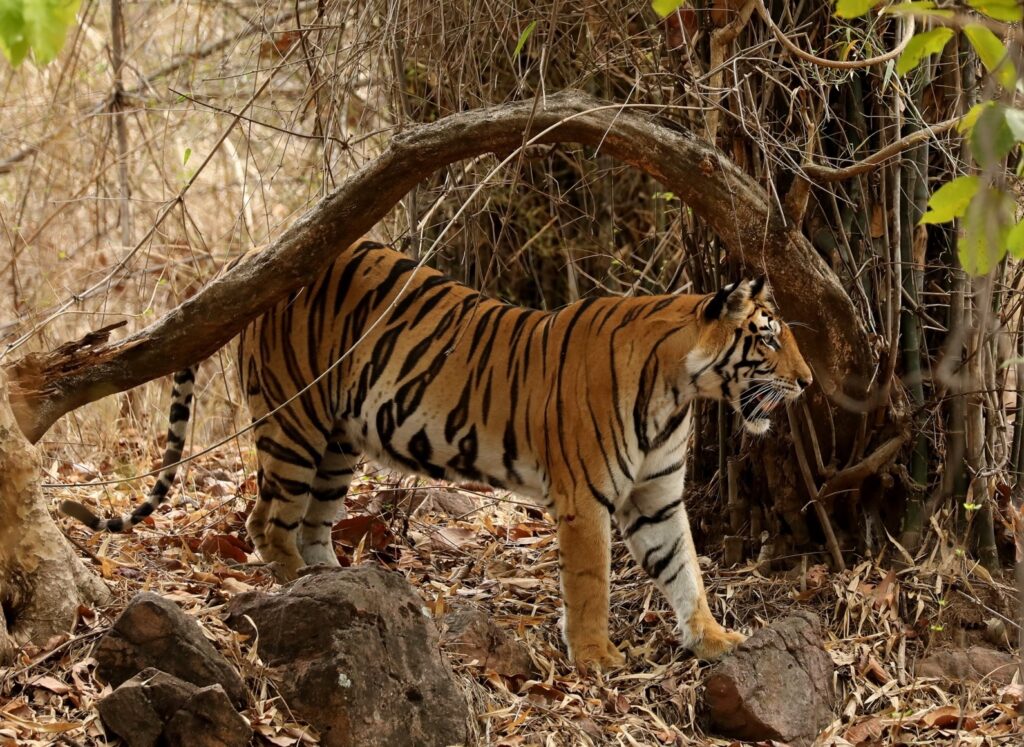
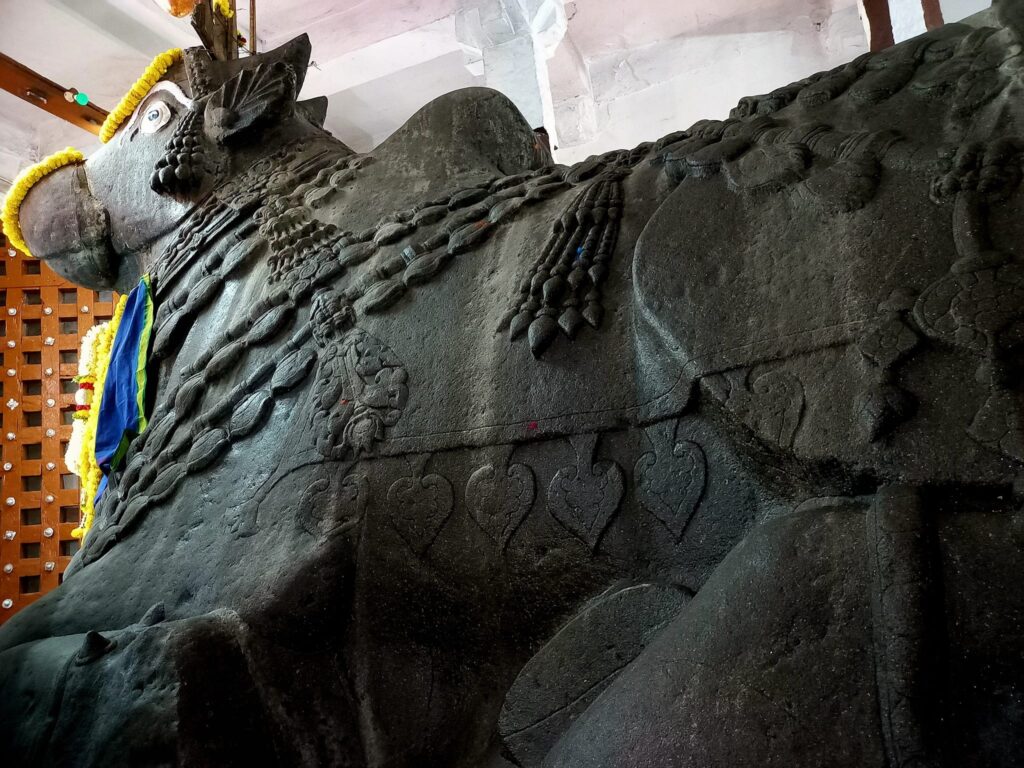
Return to Bangalore, where we arrive in the late afternoon. After you have freshened up in your day room, we will take you to a restaurant near the airport that serves truly excellent home cooking. With a full stomach and a good mood, saying goodbye is not so difficult. Farewell and evening flight home.
Thank you for checking our page in which we provide brief knowledge of Leopard Safari in India.